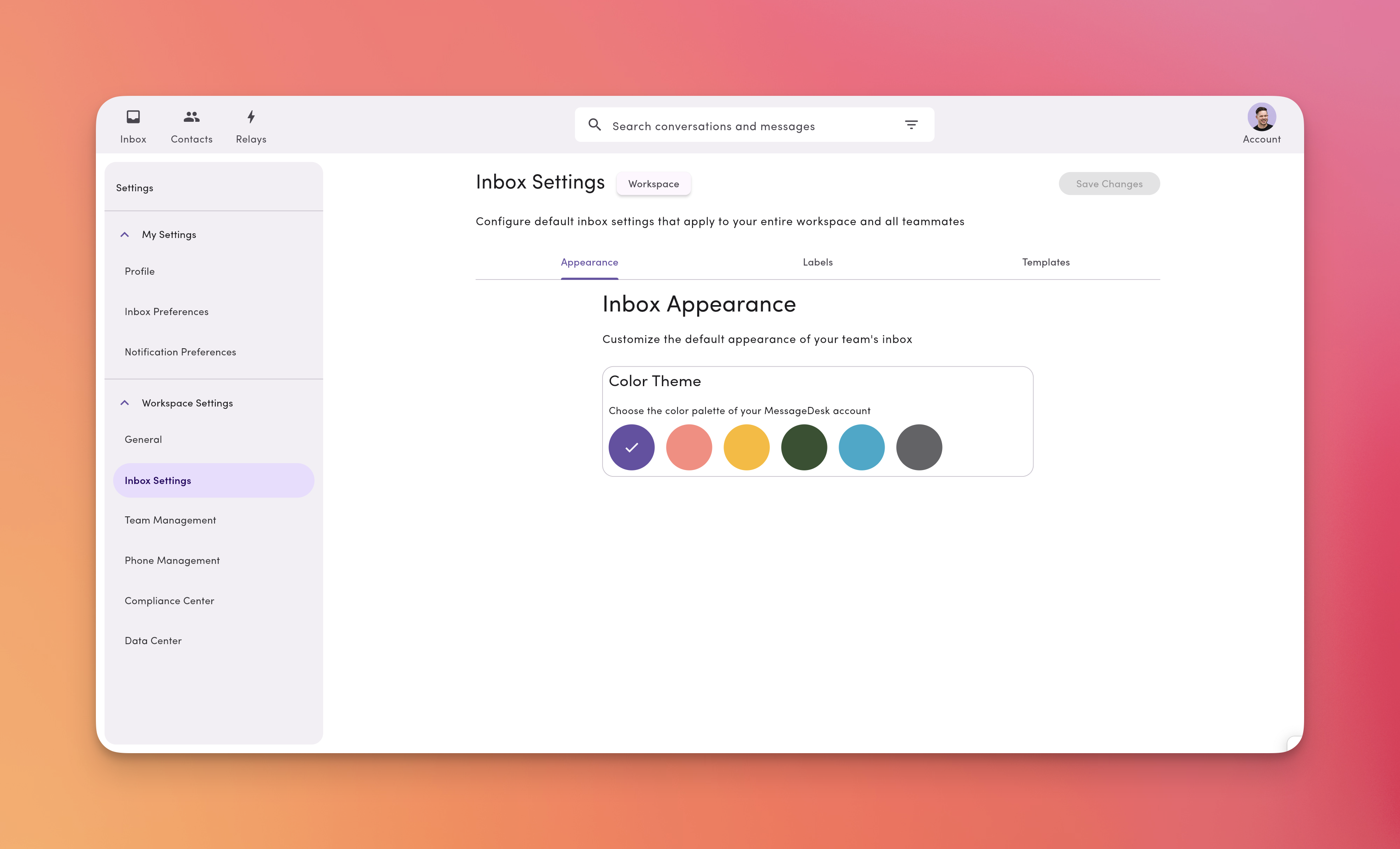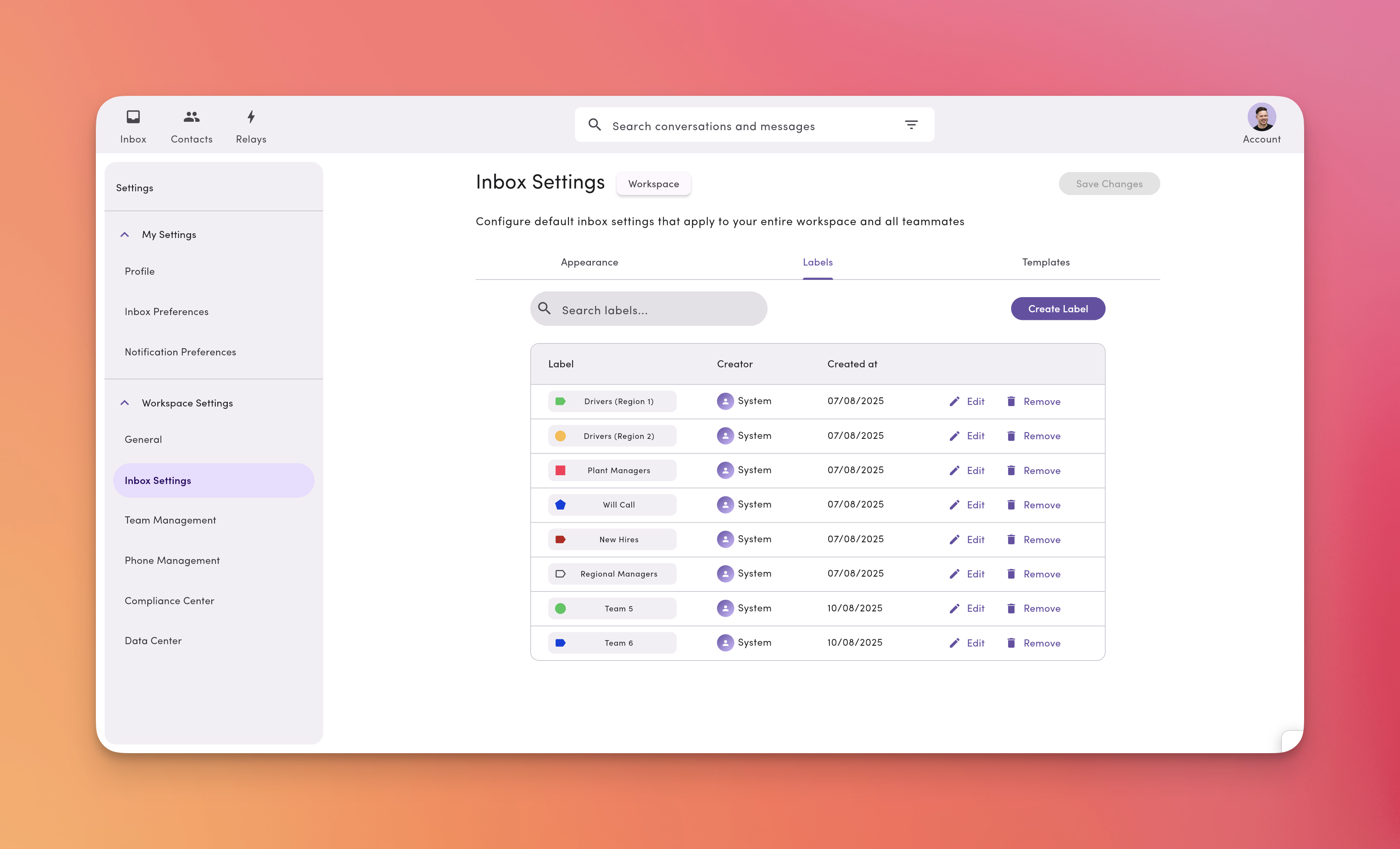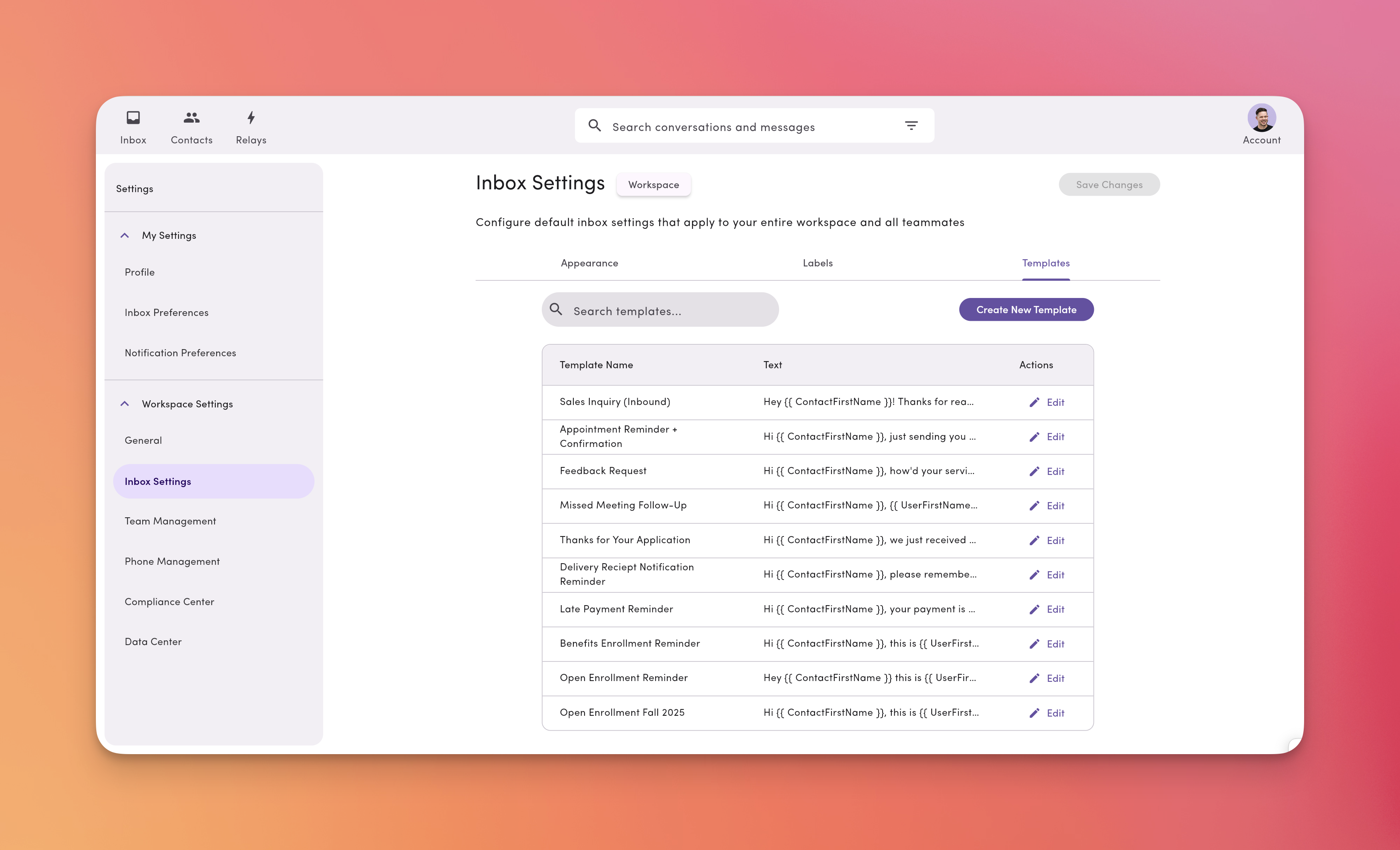Learn More About Inbox Settings for Your Entire Workspace
Use Inbox Settings to manage workspace-wide defaults for appearance (theme/colors), Labels, and Templates. These settings give your team a consistent, organized inbox experience.Note: Workspace settings act as defaults. User preferences always override workspace defaults and are not overwritten by later workspace changes.
Workspace Appearance (Theme & Colors)
Set a default color theme for everyone who hasn’t chosen personal preferences. Where to go:Account → Settings → Inbox Settings (Workspace Settings) → Appearance What you can set:
- Color theme palette (preset or custom)
- Theme mode: Light / Dark / System (if available)
- New users inherit the workspace theme.
- Any user can change their own theme in My Settings → Inbox Preferences.
- Workspace updates do not override existing user choices.

Workspace Labels (Create, Edit, Remove)
Standardize how your team groups and filters conversations with shared Labels. Where to go:Account → Settings → Inbox Settings (Workspace Settings) → Labels Actions:
- Create label – define name, color, and icon
- Search / manage existing labels
- Edit label properties (name, color, icon)
- Remove labels no longer used

Workspace Templates (Shared Message Templates)
Publish pre-approved, reusable messages for your whole team. Where to go:Account → Settings → Inbox Settings (Workspace Settings) → Templates Actions:
- Create template – add a clear name and message content
- Search / manage existing templates
- Edit template name/content
Note:
- Templates support media, emoji, and personalization tags (e.g.,
{{ ContactFirstName }},{{ WorkspaceName }}). - Keep names descriptive so teammates can find the right template fast (e.g., “Appt Reminder – 24h”).
- For personal/one-off templates, users can save their own in My Settings (if enabled).

Permissions & Best Practices
Who can manage workspace settings?Admins (and Managers, if allowed by your Roles & Permissions) can update the workspace’s Inbox Settings. Recommended setup:
- Define a small, clear label taxonomy before scaling usage.
- Review labels quarterly to remove duplicates or stale tags.
- Keep template copy concise and compliant (include opt-out language where appropriate).
- Use workspace appearance to set a professional default; let users personalize if needed.

